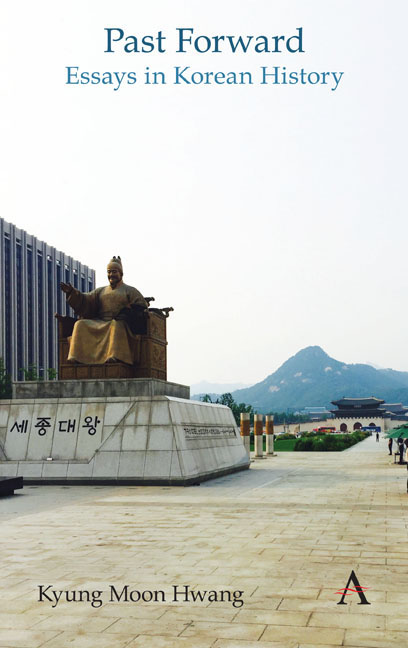Book contents
- Frontmatter
- Contents
- List of Figures
- Foreword
- Chronologies of Korean History
- Themes
- Acknowledgments
- Note on Romanization and Spelling
- Part I Circulating History
- Part II Durable Traditions
- Part III Ancient Remains
- Part IV Dynastic Depths
- 20 Currency and National Identity
- 21 Concubine Descendants
- 22 The Real Lives of Gisaeng Courtesans
- 23 A Shocking Execution
- Part V Modern Origins
- Part VI Challenges of Nationhood
- Part VII History Makers
- Part VIII External Presences
- Part IX Trials of Modernization
- Part X Gripped by the Past
- Index
23 - A Shocking Execution
from Part IV - Dynastic Depths
- Frontmatter
- Contents
- List of Figures
- Foreword
- Chronologies of Korean History
- Themes
- Acknowledgments
- Note on Romanization and Spelling
- Part I Circulating History
- Part II Durable Traditions
- Part III Ancient Remains
- Part IV Dynastic Depths
- 20 Currency and National Identity
- 21 Concubine Descendants
- 22 The Real Lives of Gisaeng Courtesans
- 23 A Shocking Execution
- Part V Modern Origins
- Part VI Challenges of Nationhood
- Part VII History Makers
- Part VIII External Presences
- Part IX Trials of Modernization
- Part X Gripped by the Past
- Index
Summary
The only top political leader in Korea to remain in power longer than Kim Il-Sung, who commanded North Korea for nearly fifty years, was King Yeongjo, whose reign in the eighteenth century, from 1724 to 1776, actually passed the half-century mark. Like Kim, Yeongjo's long tenure allowed him to amass tremendous power. And he used this authority to advance a wide range of policies and practices that most scholars agree benefited the Joseon kingdom, which achieved a cultural peak amid political stability under his rule.
In the end, however, Yeongjo is most remembered for a family tragedy in which he played the leading role: His shocking execution of his own son, and in a manner that still elicits an unshakable sadness and bewilderment. Most Koreans eventually learn this story of Crown Prince Sado (Sado Seja) being forced into a rice chest, which was then sealed shut to ensure that he would wither away after several days. Not surprisingly, this remarkable event has often been captured in the popular imagination, such as through television dramas that have replayed this excruciating moment in different ways. And recently a grand movie by director Lee Joon-ik, and starring no less than the great actor Song Gang-ho in the leading role, offered a retelling of “history's most tragic family incident” by focusing on the troubled personal relationship between father and son, between the monarch and his heir to the throne.
In the Joseon monarchy, the effects of even the most private family matters extended to the country as a whole, at times shaking the very foundations of the ruling system. This was why disputes over royal succession often resulted in violence and crises that engulfed the government and society. But until the execution of Sado, there had not been an incident in which the crown prince himself was not only demoted or punished, but killed by the same governing order led by his father.
People have long wondered what really triggered such a shocking event. Was the prince's unpredictable behavior, which admittedly was severe, indeed a menace to the entire country? Further, why did King Yeongjo feel the need to kill his son instead of sending him, for example, into exile?
- Type
- Chapter
- Information
- Past ForwardEssays in Korean History, pp. 65 - 67Publisher: Anthem PressPrint publication year: 2019

